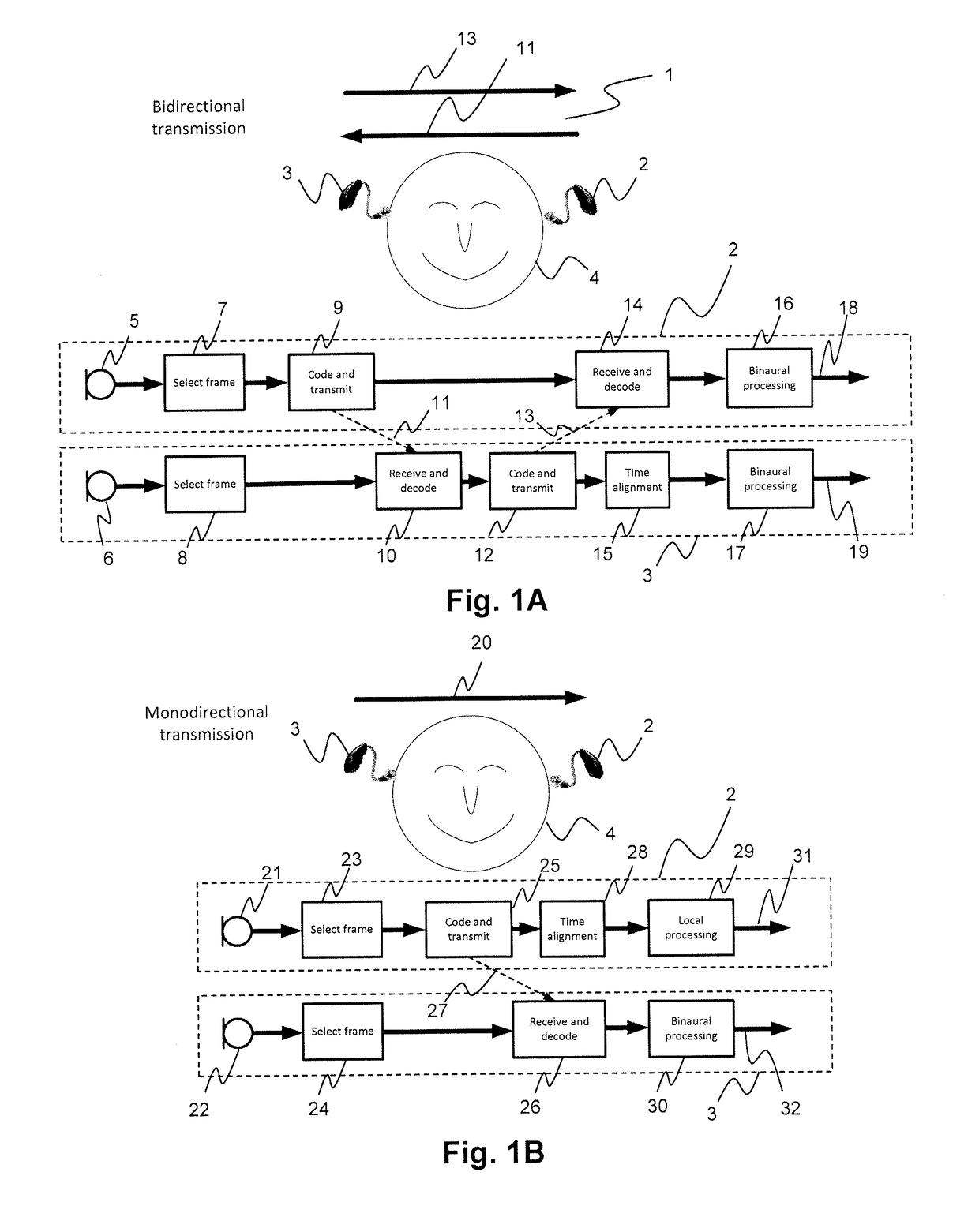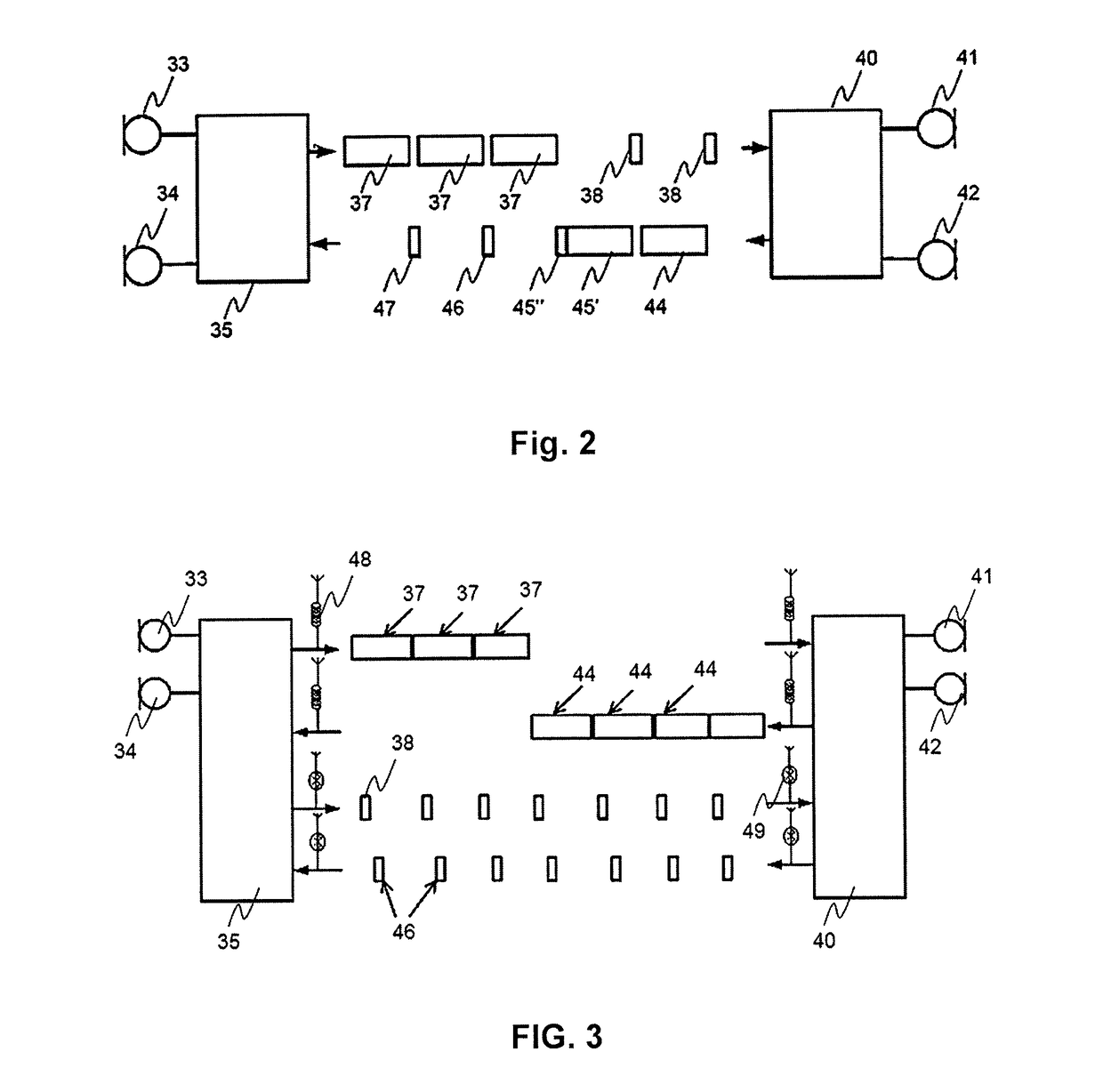Method for selecting transmission direction in a binaural hearing aid
a transmission direction and binaural technology, applied in the field of binaural hearing aid systems, can solve the problems of delay in the processing chain, loss or at least deterioration of most of the benefit of listening with two ears, and destruction of spatial perception or at least disturbed, so as to reduce the overall processing delay in the binaural system
- Summary
- Abstract
- Description
- Claims
- Application Information
AI Technical Summary
Benefits of technology
Problems solved by technology
Method used
Image
Examples
Embodiment Construction
[0057]The detailed description set forth below in connection with the appended drawings is intended as a description of various configurations. The detailed description includes specific details for the purpose of providing a thorough understanding of various concepts. However, it will be apparent to those skilled in the art that these concepts may be practiced without these specific details. Several aspects of the system and method are described by various blocks, functional units, modules, components, circuits, steps, processes, algorithms, etc. (collectively referred to as “elements”). Depending upon particular application, design constraints or other reasons, these elements may be implemented using electronic hardware, computer program, or any combination thereof
[0058]As described above, when doing binaural signal processing, it is important that the audio signals are correctly time-aligned at both hearing instruments. Otherwise, the spatial perception may be destroyed or at lea...
PUM
 Login to View More
Login to View More Abstract
Description
Claims
Application Information
 Login to View More
Login to View More - R&D
- Intellectual Property
- Life Sciences
- Materials
- Tech Scout
- Unparalleled Data Quality
- Higher Quality Content
- 60% Fewer Hallucinations
Browse by: Latest US Patents, China's latest patents, Technical Efficacy Thesaurus, Application Domain, Technology Topic, Popular Technical Reports.
© 2025 PatSnap. All rights reserved.Legal|Privacy policy|Modern Slavery Act Transparency Statement|Sitemap|About US| Contact US: help@patsnap.com



